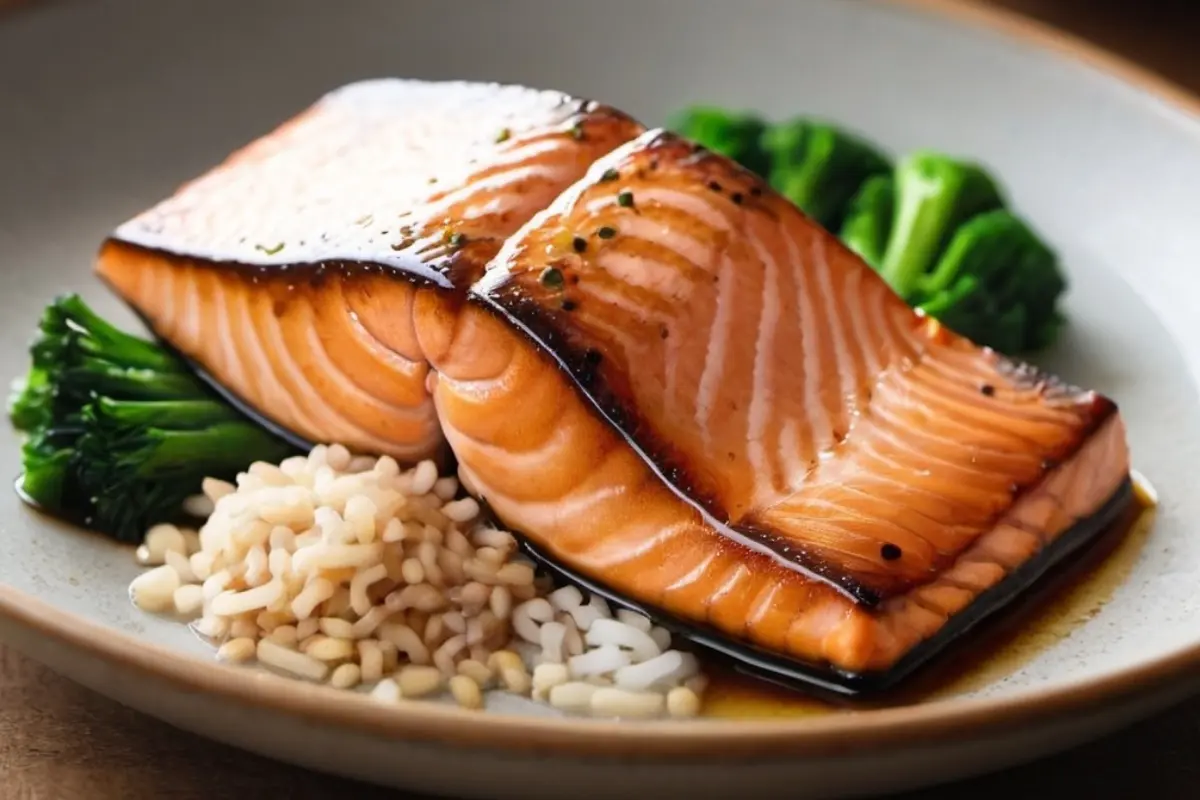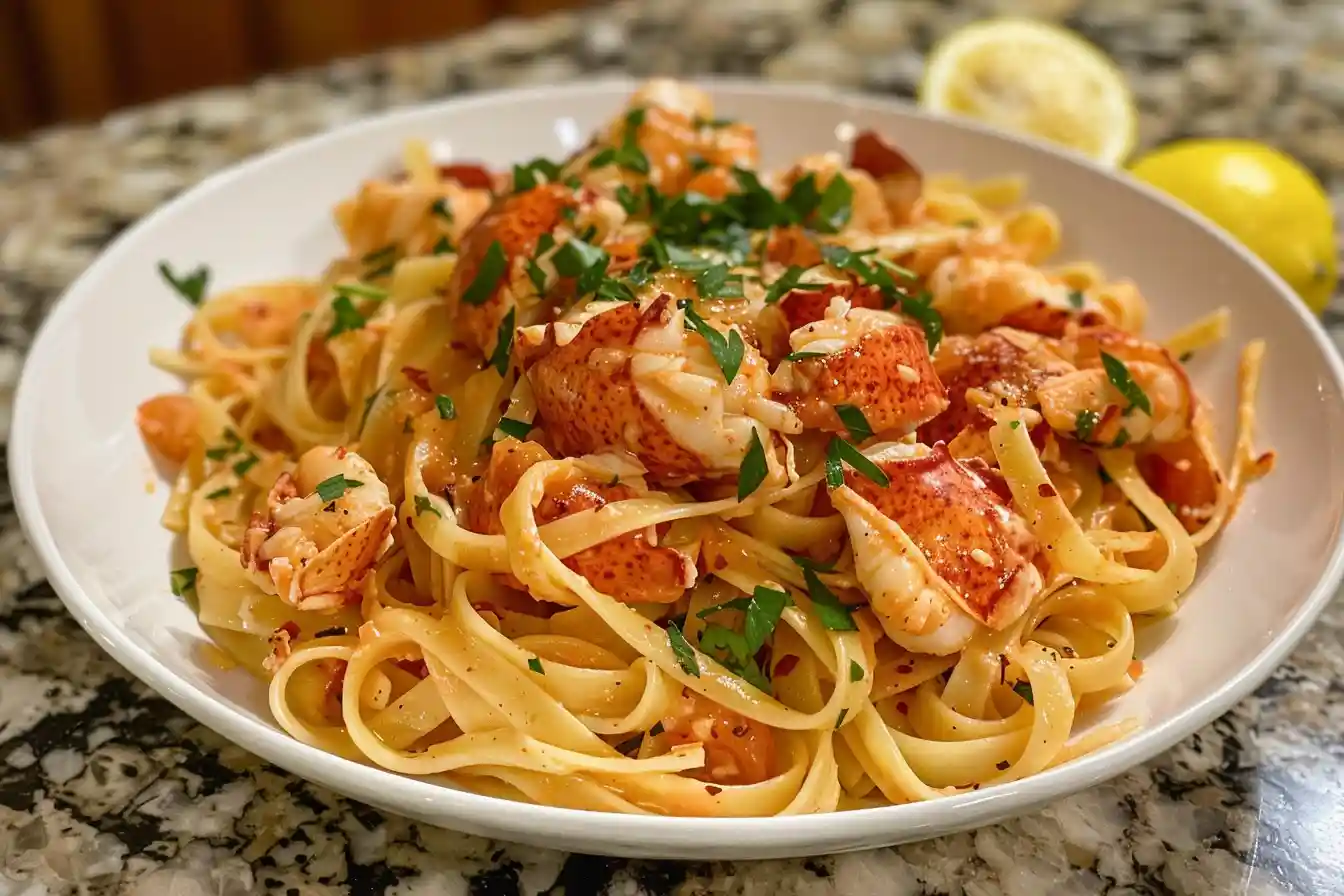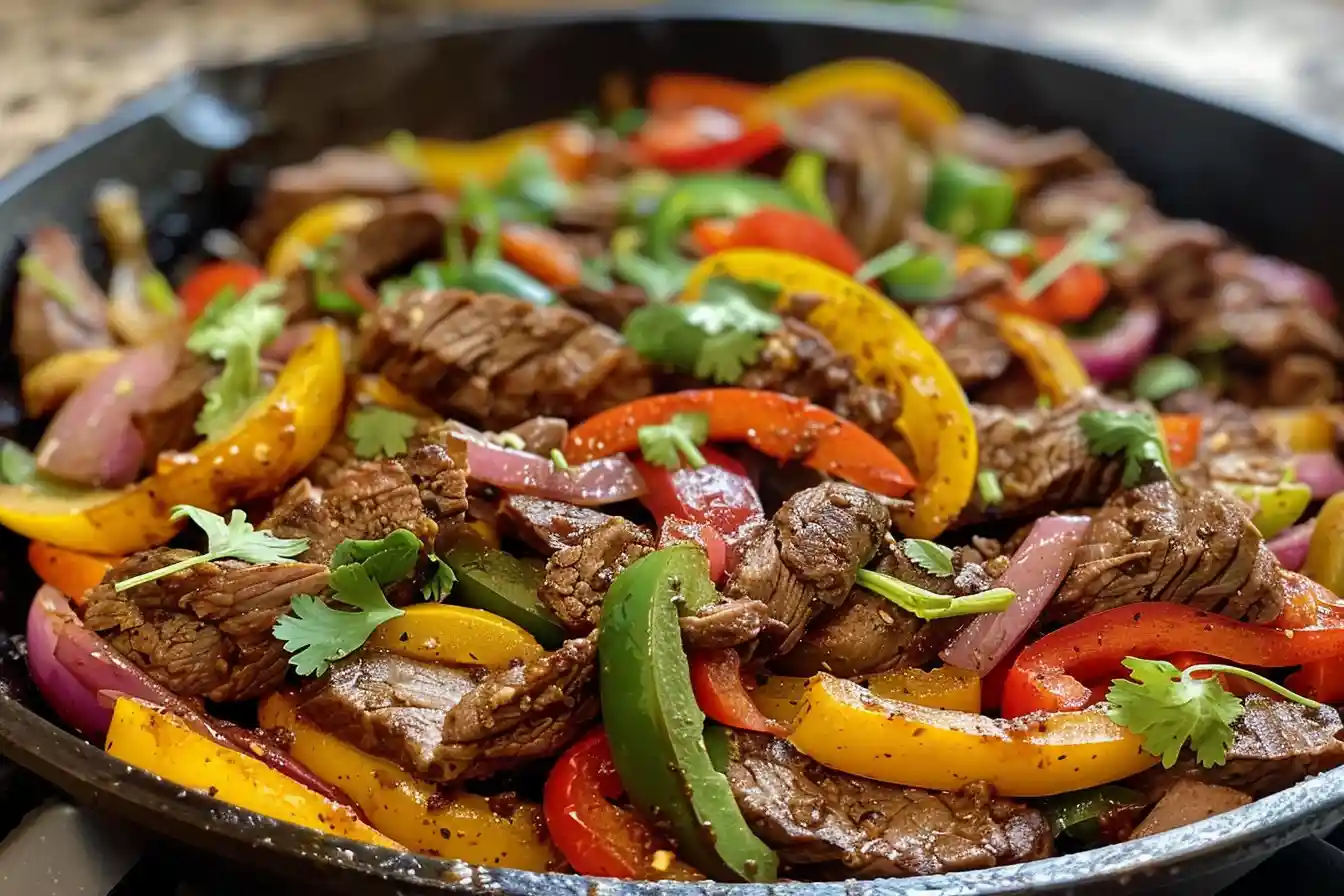Miso salmon recipe is a delightful dish that combines the bold, savory flavors of miso paste with the tender, flaky texture of salmon. This dish is beloved in both Japanese and Western cuisines, offering a harmonious balance of rich umami and the natural sweetness of fish.
Whether served as a main course at dinner parties or as a simple weeknight meal, miso salmon is versatile, easy to prepare, and sure to satisfy.
The Origins of Miso Salmon
The combination of miso and salmon has its roots in Japanese cuisine, where miso has been a staple ingredient for centuries. Miso paste, made from fermented soybeans, rice, or barley, brings a deep, savory flavor to dishes. When paired with salmon, a fish that is naturally rich in omega-3 fatty acids, the result is a dish that is not only delicious but also packed with nutrients. This recipe has evolved over time, with variations emerging in different parts of the world, each bringing its own unique twist to the classic dish.
Why Miso Salmon Is a Must-Try Dish
Miso salmon is more than just a tasty meal—it’s an experience. The marinated salmon absorbs the complex flavors of the miso marinade, resulting in a dish that is savory, slightly sweet, and full of umami. Whether you’re cooking for yourself or entertaining guests, miso salmon is a crowd-pleaser that requires minimal effort yet delivers maximum flavor.
The Essential Ingredients for Miso Salmon Recipe
To create a truly spectacular miso salmon dish, it’s important to start with the right ingredients. Each component plays a crucial role in building the flavors of the final dish.
Choosing the Perfect Salmon
When selecting salmon for your miso salmon recipe, opt for fresh, high-quality fillets. Wild-caught salmon is often preferred for its robust flavor and firm texture, but farmed salmon can also be a good choice, particularly for those on a budget. Look for fillets that are bright in color, with a fresh, ocean-like smell. Avoid salmon that appears dull or has a strong, fishy odor, as this may indicate that the fish is not fresh.
Understanding Miso Paste and Its Varieties
Miso paste is the star ingredient in this recipe, providing the deep, savory flavor that defines the dish. There are several types of miso paste, each with its own unique characteristics:
- White Miso (Shiro Miso): The mildest and sweetest of the miso pastes, white miso is made with a higher proportion of rice and is ideal for dishes where you want a subtle flavor.
- Yellow Miso (Shinshu Miso): This miso is slightly stronger than white miso and has a more complex flavor. It’s a versatile option that works well in a variety of dishes.
- Red Miso (Aka Miso): The most robust and salty of the miso pastes, red miso is aged longer and has a deeper umami flavor. It’s best used in dishes where you want a bold, intense flavor.
For miso salmon, many chefs prefer using a combination of white and red miso, balancing the sweetness and umami to create a well-rounded marinade.
Other Key Ingredients: Soy Sauce, Sake, and Mirin
In addition to miso paste, several other ingredients are essential for a flavorful miso salmon marinade:
- Soy Sauce: Adds saltiness and depth of flavor. Opt for a low-sodium soy sauce if you’re watching your salt intake.
- Sake: A Japanese rice wine that adds a subtle sweetness and helps tenderize the salmon.
- Mirin: A sweet rice wine used in Japanese cooking, mirin enhances the sweetness of the marinade and balances the salty and savory flavors.
Together, these ingredients create a marinade that is complex, balanced, and deeply flavorful.

Preparation Tips for Miso Salmon Recipe
The key to a successful miso salmon recipe lies in the preparation. Taking the time to properly prep and marinate your salmon will ensure that every bite is packed with flavor.
Prepping the Salmon Fillets
Before you begin marinating your salmon, it’s important to prep the fillets properly. Start by checking for any bones that may have been left in the fillets. Use a pair of fish tweezers to gently remove any pin bones, being careful not to damage the flesh of the fish. Next, pat the salmon fillets dry with paper towels.
This will help the marinade adhere to the fish and create a better texture when cooked.
Marinating the Salmon: The Key to Deep Flavor
Marinating is a crucial step in the miso salmon recipe, as it allows the flavors of the miso and other ingredients to penetrate the fish. For best results, marinate the salmon for at least 30 minutes, though marinating for up to 2 hours will result in a more intense flavor. Be sure to turn the fillets halfway through marinating to ensure even coverage.
Making the Marinade: Balancing Flavors
Creating the perfect miso marinade is all about balance. Here’s a simple recipe to get you started:
- 3 tablespoons white miso paste
- 1 tablespoon red miso paste
- 2 tablespoons soy sauce
- 2 tablespoons sake
- 2 tablespoons mirin
- 1 tablespoon sugar (optional, to balance the saltiness)
Whisk these ingredients together in a bowl until smooth. The sugar is optional and can be adjusted based on your taste preferences. If you prefer a sweeter marinade, you can increase the amount of sugar or add a touch of honey.
Cooking Techniques for Miso Salmon Recipe
There are several ways to cook miso salmon, each offering a slightly different flavor and texture. Here are the most popular methods:
Oven-Baking Miso Salmon
Oven-baking is one of the most straightforward and foolproof methods for cooking miso salmon. Preheat your oven to 375°F (190°C) and line a baking sheet with parchment paper or aluminum foil.
Place the marinated salmon fillets on the baking sheet, skin-side down. Bake for 12-15 minutes, or until the salmon is cooked through and flakes easily with a fork. The miso marinade will caramelize slightly, creating a delicious crust on the surface of the fish.
Pan-Seared Miso Salmon
For a more hands-on approach, pan-searing miso salmon is a great option. Heat a tablespoon of oil in a non-stick skillet over medium-high heat. Once the oil is hot, add the salmon fillets, skin-side down. Cook for 4-5 minutes, then flip and cook for an additional 3-4 minutes, until the salmon is cooked through. Pan-searing gives the salmon a beautifully crisp skin while keeping the inside moist and tender.
Grilling Miso Salmon to Perfection
Grilling miso salmon adds a smoky flavor that pairs wonderfully with the savory miso marinade. Preheat your grill to medium-high heat and lightly oil the grates to prevent sticking.
Place the salmon fillets on the grill, skin-side down, and cook for 4-6 minutes per side, depending on the thickness of the fillets. Be sure to watch the salmon closely to avoid overcooking.
Serving Suggestions for Miso Salmon Recipe
Miso salmon is a versatile dish that can be served in a variety of ways. Here are some ideas to inspire your meal planning:
Pairing with Rice: A Classic Combination
Rice is a traditional accompaniment to miso salmon, offering a neutral base that allows the flavors of the fish to shine. You can serve the salmon over a bed of steamed white rice, brown rice, or even sushi rice for a more authentic Japanese experience. For added flavor, consider mixing some furikake (a Japanese seasoning) into the rice before serving.
Fresh Vegetables and Salads: Complementing the Richness
To balance the richness of the miso salmon, serve it alongside fresh vegetables or a light salad. Blanched asparagus, sautéed spinach, or a crisp cucumber salad with a tangy vinaigrette all make excellent choices. These sides add a refreshing contrast to the savory fish, making for a well-rounded meal.
Creative Garnishes and Toppings
Elevate your miso salmon dish with creative garnishes and toppings. A sprinkle of toasted sesame seeds, thinly sliced green onions, or a drizzle of sesame oil can add a new dimension of flavor. For a touch of heat, try adding a dash of chili flakes or a spoonful of pickled ginger.
Miso Salmon Variations
While the classic miso salmon recipe is always a hit, there are plenty of ways to put your own spin on the dish. Here are a few variations to try:
Spicy Miso Salmon: Adding a Kick
If you enjoy a bit of heat, consider making a spicy miso salmon by adding a tablespoon of sriracha or a teaspoon of chili paste to the marinade. This variation offers a delicious balance of spicy, salty, and umami flavors.
Sweet Miso Salmon: A Subtle Twist
For those with a sweet tooth, try sweet miso salmon by increasing the sugar or adding a tablespoon of honey to the marinade. This version pairs especially well with grilled pineapple or a citrusy salad.
Miso Salmon with Citrus: A Fresh, Tangy Flavor
Adding a splash of citrus juice—such as orange, lime, or lemon—can brighten the flavors of the miso salmon. Marinate the salmon with a mix of miso, citrus juice, and a bit of zest for a fresh and tangy twist on the traditional recipe.
Health Benefits of Miso Salmon
Miso salmon is not only delicious but also packed with nutrients that offer numerous health benefits.
Nutritional Profile of Salmon
Salmon is a powerhouse of nutrition, rich in omega-3 fatty acids, high-quality protein, and essential vitamins and minerals. These nutrients support heart health, brain function, and overall well-being, making salmon an excellent choice for a healthy diet.
The Benefits of Miso Paste
Miso paste, made from fermented soybeans, is a good source of protein, fiber, and beneficial probiotics. The fermentation process also enhances the bioavailability of nutrients, making miso a valuable addition to any diet. The probiotics in miso can aid digestion and support a healthy gut microbiome.
How This Recipe Fits Into a Healthy Diet
Miso salmon is a balanced dish that can fit into a variety of dietary patterns. It’s high in protein and healthy fats while being relatively low in calories, making it a satisfying meal that won’t derail your diet. Pairing it with nutrient-dense sides like vegetables or whole grains ensures a well-rounded meal.
Miso Salmon for Special Diets
Miso salmon can be easily adapted to suit a variety of dietary needs. Here are some modifications to consider:
Gluten-Free Miso Salmon Recipe
To make a gluten-free version of miso salmon, be sure to use gluten-free soy sauce (tamari) and check that your miso paste is certified gluten-free. Many commercial miso pastes contain barley or wheat, so it’s important to read labels carefully.
Low-Sodium Miso Salmon Recipe
For a low-sodium version, reduce the amount of soy sauce in the marinade or use a low-sodium soy sauce. You can also dilute the miso paste with water to reduce the overall salt content without sacrificing flavor.
Dairy-Free Miso Salmon Recipe
Miso salmon is naturally dairy-free, making it a great option for those with lactose intolerance or a dairy allergy. Just be sure to check that all your ingredients are free from hidden dairy products.
Common Mistakes to Avoid When Making Miso Salmon
While miso salmon is a relatively simple dish, there are a few common mistakes that can detract from the final result. Here’s what to watch out for:
Overcooking the Salmon
One of the most common mistakes when making miso salmon is overcooking the fish. Salmon is best served slightly pink in the center, which ensures it’s moist and tender. Keep a close eye on the cooking time, and use a meat thermometer to check for doneness if you’re unsure.
Using the Wrong Type of Miso Paste
As mentioned earlier, the type of miso paste you use can significantly impact the flavor of your salmon. Be sure to choose a paste that matches your desired flavor profile—mild for a subtle taste, or strong for a more robust dish.
Not Marinating Long Enough
To achieve the deep, complex flavors that make miso salmon so special, it’s important to marinate the salmon for at least 30 minutes. Skipping this step or shortening the marinating time can result in a less flavorful dish.

Advanced Techniques for Miso Salmon Recipe
For those looking to take their miso salmon to the next level, here are some advanced techniques to try :
Sous Vide Miso Salmon
Sous vide is a cooking technique that involves vacuum-sealing food and cooking it in a water bath at a precise temperature. This method ensures that the salmon is cooked evenly and retains its moisture. To make sous vide miso salmon, marinate the salmon as usual, then seal it in a vacuum bag and cook at 125°F (52°C) for 45 minutes. Finish by searing the salmon in a hot pan for a crispy exterior.
Miso Salmon with a Crispy Skin
For a restaurant-quality presentation, focus on getting the skin of your salmon extra crispy. Start by scoring the skin with a sharp knife, then pat it dry and season with salt. Cook the salmon skin-side down in a hot pan with a little oil, pressing down with a spatula to ensure even cooking. Once the skin is crispy, flip the salmon and cook briefly on the other side.
Miso Salmon Sashimi: Raw Perfection
For a truly unique experience, try serving miso-marinated salmon as sashimi. This Japanese technique involves serving thin slices of raw fish, typically paired with soy sauce and wasabi. To prepare miso salmon sashimi, marinate the salmon briefly (about 10 minutes), then slice it thinly and serve immediately. Be sure to use the freshest salmon possible and follow proper food safety guidelines when preparing raw fish.
Pairing Wine and Sake with Miso Salmon
Pairing the right beverage with your miso salmon can elevate the dining experience. Here are some suggestions:
Best Wine Choices for Miso Salmon
The rich, savory flavors of miso salmon pair well with a variety of wines. Here are a few options to consider:
- Chardonnay: A full-bodied Chardonnay with hints of oak and butter complements the richness of the miso and salmon.
- Pinot Noir: This light, fruity red wine pairs well with the umami flavors of the miso, offering a nice contrast.
- Riesling: A slightly sweet Riesling can balance the salty and savory notes of the dish.
Sake Pairing Guide
If you prefer to stick with a traditional Japanese beverage, sake is an excellent choice. Here are some types of sake that pair well with miso salmon:
- Junmai: A pure rice sake with a full-bodied flavor that complements the umami of the miso.
- Ginjo: A sake with a fruity and floral aroma that pairs well with the delicate flavors of the salmon.
- Daiginjo: A premium sake with a smooth, refined flavor that enhances the overall dining experience.
Non-Alcoholic Beverage Options
For those who prefer non-alcoholic beverages, consider pairing your miso salmon with green tea or a refreshing cucumber-infused water. These options are light and cleanse the palate between bites.
Miso salmon recipe is a culinary delight that combines the rich flavors of miso paste with the natural sweetness of salmon. This dish is versatile, easy to prepare, and sure to impress whether you’re cooking for a special occasion or just a simple weeknight dinner. By following the tips and techniques outlined in this guide, you’ll be able to create a miso salmon dish that is both delicious and nutritious.
So why wait? Head to your kitchen, gather your ingredients, and start cooking the perfect miso salmon recipe today!
Frequently Asked Questions About Miso Salmon Recipe
Yes, you can use frozen salmon for miso salmon. Be sure to thaw the salmon completely in the refrigerator before marinating it. Frozen salmon may have a slightly different texture than fresh, but it will still be delicious.
For the best flavor, marinate the salmon for at least 30 minutes and up to 2 hours. Marinating for longer than 2 hours is not recommended, as the acidity in the marinade can start to “cook” the fish, similar to ceviche.
The type of miso paste you use depends on your flavor preferences. White miso is mild and sweet, yellow miso is more robust, and red miso is bold and salty. Many chefs recommend a blend of white and red miso for a balanced flavor.





